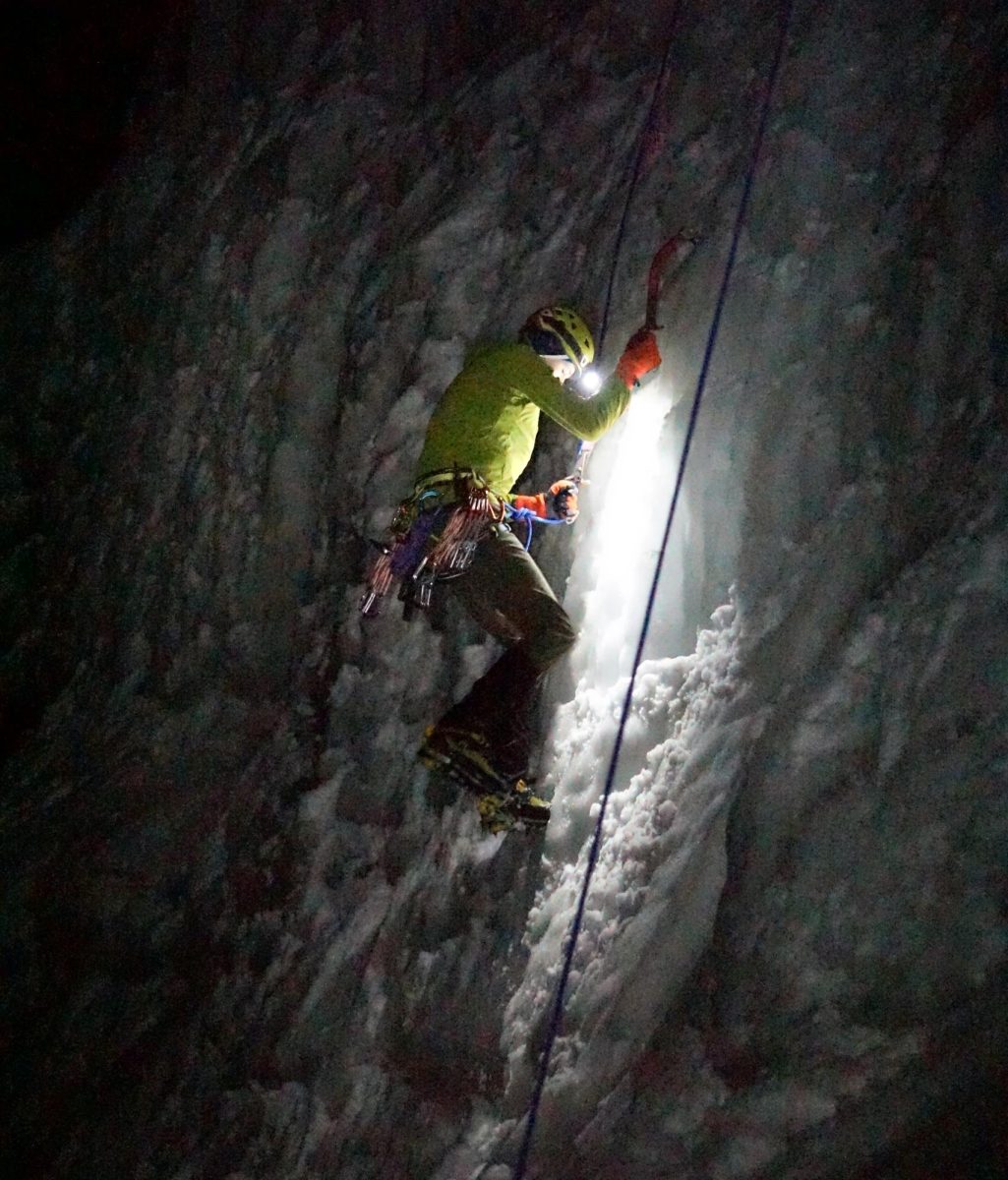There’s a room in Highland junior Jacob Ward’s basement that looks like it belongs to an Antarctica expedition team. Carabiners, draws, ropes, ice axes, shin gators, mittens and gloves, and helmets hang from the ceiling in every direction. Rows of mountaineering boots, anywhere from sizes 6 to 13, take up spots along the wall, and harnesses, crampons, and backpacks are stacked in corners, or even set out on the living room floor, ready to be packed for whatever adventure lies in store.
Ward has been ice climbing since he could walk, which is an impressive feat considering there’s no mountaineering boots for little kids, which should make it somewhat impossible altogether. Luckily, Dallen Ward – Jacob’s dad – solved that problem by belay-strapping half a crampon onto his ski boots so even at a young age, Ward could get on the ice.
“He’s taught ice climbing in college, and he’s also guided a lot, which requires the knowledge and the skills,” Ward said. “It’s been his passion ever since he was little too.”
And apparently, that passion was hereditary.
Fifteen years later, the thought of climbing up a 50-foot (or more) frozen waterfall is terrifying to some people, but when he thinks about it, Ward doesn’t even bat an eye.
“Everyone that I’ve ever gone ice climbing with that he’s taken, that’s never been, every time they say it’s not what they expected at all,” Ward said. “They expect it to be scary, which it can be, but that’s really just your perspective on it. And yeah, it’s cold, but it’s never what they expect it to be.”
Ice climbing is a staple sport in the more outdoorsy community, but not as much with high-schoolers. In a way, that’s kind of surprising considering how popular rock climbing has become.
While ice climbing and rock climbing have some similar attributes, like setting up leads and ropes, rope skills, and generally having fun in the mountains, there’s some key differences that make it harder to get into.
First of all, there’s two long and slender ice axes, with curved blades that a climber uses to get up the ice. It takes a strong swing of the arm and a flick of the wrist, as well as an ability to know exactly where to place it in order for the blade to plant into the ice. Once the end is planted in, the climber has to kick their toes in and stand up. This process is repeated, hitting, sticking, kicking in, and then pulling themselves up until they reach the top. It takes a surprising amount of technique, with lots of little details that aren’t absolutely vital, but make for a better climb, like flexing the fingers every time the axe is planted to allow blood to circulate and keep the hands warm.
It can also be dangerous, especially when the weather gets warmer. The ice starts to melt, and will even start to shift, creating falling ice particles that will hurt a climber if they are standing in the way, or not wearing a helmet. It can be unnerving when the ice begins to shift mid-climb, prompting Dallen to ensure all climbers quickly hugged the ice wall to avoid falling debris, but it’s important to maintain calm when climbing.
And while nerves are steel are required, so is a flexible bank account. Ice climbing requires more gear than rock climbing, which means it is expensive.
“It’s a lot simpler to get into rock climbing, and a lot more approachable, because ice climbing, there’s a lot more technique and knowledge required to get into it,” Ward said. “I’m not saying that you can’t get into it—a lot of people do—it’s just a little bit harder because you need your draws, but you also need ice screws, axes, crampons, and there’s a little bit more to it than rock climbing.”
Ward knows how to “read the ice,” which means he can look at the frozen wall in front of him, and see places where the axes are likely to have a strong hold, which takes an advanced climber to truly understand.
When a climber is on fresh ice that hasn’t been touched yet, they have to look for places where it’s not going to play out or even shower down on them once it’s been hit. If a climber can do that, the ice is less likely to break, and they can get a good stick on the first try.
In spite of all that, or perhaps even because of it, Ward loves ice climbing.
“I love being in the mountains,” Ward said. “Unlike rock climbing, I feel like ice climbing is more of an adventure. It feels more surreal. It’s a little bit different in that way. I love the snow a lot; I like being cold.”
Ice Ice Climbing
Jacob Ward Knows How To “Read The Ice” During His Ice Climbs Across The Country
Halle Backman, Associate Editor
February 15, 2024
Jacob Ward climbs Stairway to Heaven in Provo Canyon.
0































